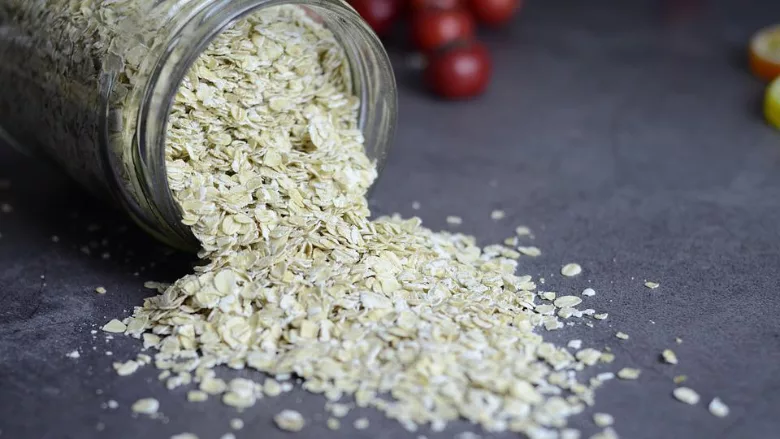Best Practices for Sourcing Gluten-free Oats when Supply is Limited

As COVID restrictions start to lift, life is returning to a semblance of normal for food manufacturers. However, ongoing problems sourcing ingredients and rising prices continue to impact production, particularly for manufacturers of products that require gluten-free oats. Reasons for the current oat shortage are varied, but drought tops the list. Due in large part to climate change, the areas of the U.S. that grow oats are hotter and drier in recent years, leading to drought conditions that have reduced the output of oat crops by about half. A grasshopper infestation has further reduced supply, and the oats that remain are of lower quality.
Another factor in the current oat shortage comes down to crop prices, which vary from one year to the next. In the most recent growing season, wheat commanded higher prices, so growers planted fewer oats. Manufacturers of gluten-free oat products must also compete with rising demand for oat milk and other oat products, making gluten-free oats even harder to come by.
International Sources of Gluten-Free Oats are in Short Supply
Faced with oat shortages domestically, some food manufacturers have looked to international sources of gluten-free oats with mixed success due to concerns about comingling. Although oats are inherently gluten-free, they are grown in the same area at the same time of year as wheat, barley, and rye, increasing the likelihood that grains containing gluten could contaminate oat crops. An added risk occurs during harvesting and packing, when many growers use the same equipment to process oats and other grains.
Australia and New Zealand treat oats as a gluten source and prohibit food manufacturers from labeling oat products as gluten-free. The result is that farmers in these countries have little incentive to grow gluten-free oats. The Codex Alimentarius, a collection of international standards for food safety, also classifies oats as a gluten source; however, individual countries are responsible for enforcement, and regulation is inconsistent.
The Importance of Sourcing High-Quality Oats
Growers can market crops as oats even if they contain a high percentage of other grains—as much as 3 percent other grains in U.S. No. 1 oats, the highest grade of oats as assessed by the USDA. As a result, growers may not recognize the importance of preventing comingling. Since even a tiny particle of gluten can cause serious health problems for people with celiac disease, the U.S. Food and Drug Administration (FDA) requires products labeled as gluten-free to contain less than 20 ppm of gluten.
Looking for quick answers on food safety topics?
Try Ask FSM, our new smart AI search tool.
Ask FSM →
Even if products met this standard in the past, the current shortage of high-quality oats may impact the ability to do so in the present. Faced with limited supply, some manufacturers may be tempted to replace oats with other ingredients. However, reformulating a product may result in a loss of nutritional value, because oats are a good source of soluble fiber, protein, and minerals. For consumers who want gluten-free cereal bars and other oat products, the loss of nutritional value could reduce the appeal of certain products and hurt sales.
When referring to high-quality oats, certifying organizations generally mean oats that contain a minimal amount of contamination by other grains in addition to being larger and plumper than lower-quality oats. To produce gluten-free oats, growers and manufacturers use two main techniques—purity protocol and mechanical sorting:
- Purity protocol minimizes contamination during the growing and harvesting process by establishing buffer zones between oat fields and other crops and using dedicated equipment to process oats.
- Mechanical sorting separates oats from grains that contain gluten during processing. This method requires a lot of equipment and a starting yield of good-quality oats.
A third method uses a combination of purity protocol and mechanical sorting. This combination method uses oats from growers that use some purity protocols, like dedicating certain fields to oats instead of switching crops every year, producing cleaner oats that they can then sort to remove gluten-containing grains.
Buying Certified Gluten-Free Oats to Ensure Quality
One option for obtaining high-quality oats is to source oats that are certified as gluten-free. To be certified as gluten-free, oats must meet strict standards that limit the amount of contamination to an acceptable threshold. For example, the Gluten-Free Certification Organization (GFCO) requires oats to contain less than one intact gluten-containing grain in every four kilograms of oats.
If seeking the certification route, be aware that the type of certification matters. Many organizations that certify oats as gluten-free are primarily concerned with documentation, so their audits are more focused on checking paperwork than reviewing specific ingredients or manufacturing processes. To ensure that oats meet the highest standards, look for a certifying organization that examines processes for preventing comingling of oats and grains with gluten during growing, harvesting, and processing. Certifying organizations should also examine processes for packing gluten-free products to prevent cross-contact.
Using Visual Inspections to Reduce Contamination
For manufacturers that do not source oats certified as gluten-free, ensuring that oats meet FDA's threshold requirement is even more important. Testing oats using antibody-based gluten test kits is one way to verify that they meet the FDA standard, but obtaining reliable results requires a large sample of oats that are ground into small particles to use as a testing sample. A better way to ensure quality across the entire lot is to conduct a visual inspection using a minimum sample of ten kilograms of product and confirming that it does not contain more than two grains of wheat, barley, or other gluten-containing grain.
While many COVID restrictions are being lifted, manufacturers of gluten-free products continue to wrestle with supply chain issues. For manufacturers of gluten-free oat products, understanding the importance of sourcing high-quality oats is critical to producing food that is safe to eat for people with celiac disease and other forms of gluten sensitivity. Purchasing oats certified as gluten-free, knowing best practices for conducting antibody-based testing, and conducting visual inspections are three ways to prevent a shortage of oats from becoming the weak link in a supply chain.








